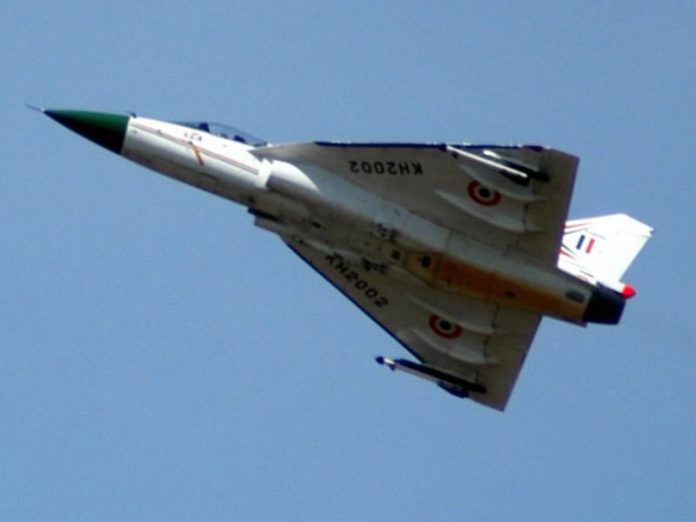Indian Indigenous fighter Aircraft – TEJAS
Tejas is India’s first Indigenous Developed Aircraft which is a 4th Generation Aircraft. Tejas has been developed by HAL (Hindustan Aeronautical Limited). It is a multi-role Light Aircraft which has been prepared for the Indian Air Force and Indian Navy. The aircraft has a tail-less compound delta-wing configuration, which gives it high maneuverability.
Main Purpose for the development of Tejas Aircraft were
- To replace the ageing MIG-21 fighters which were once the backbone of Indian Air Force. India Currently operates around 400 MIG fighters which are scheduled to be completely phased out by 2022-23.
- Tejas was also developed to decrease India’s dependency on foreign Defence Imports.
The 1st Tejas IAF Unit, the 45th Squadron of Indian Air Force has been has been named as Flying Draggers and was formed on 1st July 2016 with 2 fighters which has been stationed at Sulur, Tamil Nadu. As on Date India has a total of 8 Tejas MK1 Aircrafts. Indian Air Force will be commissioning a total of 20 such aircraft. HAL is currently undergoing construction of Advanced version of Tejas which will be more capable than the MK1 version of the aircraft and will be equipped with more powerful engine, better radars.
Sri Lanka and Egypt has expressed their desires to aquire the Tejas
Specifications of HAL Tejas MK1
General characteristics
- Crew: 1
- Length: 13.20 m (43 ft 4 in)
- Wingspan: 8.20 m (26 ft 11 in)
- Height: 4.40 m (14 ft 9 in)
- Wing area: 38.4 m² (413 ft²)
- Empty weight: 6,560 kg (14,300 lb)
- Loaded weight: 9,500 kg (20,944 lb)
- Max. takeoff weight: 13,500 kg (29,100 lb)
- Internal fuel capacity: 2,458 kg
- External fuel capacity: 2 x 1,200-litre drop tank inboard, 1 x 800-litre drop tank under fuselage
- Powerplant: 1 × General Electric F404-GE-IN20 turbofan
- Dry thrust: 53.9 kN (12,100 lbf)
- Thrust with afterburner: 89.8 kN (20,200 lbf)
Performance
- Maximum speed: Mach 1.8 (2,205 km/h) for FOC version; Mach 1.6 (2,000 km/h) for IOC version;
- Range: 3,000 km (1,620 nmi, 1,864 mi)
- Combat radius: 500 km (270 nmi, 311 mi)
- Ferry range: 1,700 km (1,056 mi)
- Service ceiling: 16,000 m (52,500 ft)
- Wing loading: 247 kg/m² (50.7 lb/ft²)
- Thrust/weight: 1.07
- g-limits: +8/−3.5 g
Armament
- Guns: 1× mounted 23 mm twin-barrel GSh-23 cannon with 220 rounds of ammunition
- Hardpoints: 8 (1× beneath the port-side intake trunk for targeting pods, 6× wing, and 1× fuselage) with a capacity of 3,500 kg external fuel and ordnance and provisions to carry combinations of:
- Rockets: S-8 rocket pods, Bofors 135 mm rocket
- Missiles:
- Air-to-air missiles:
- Astra
- Derby
- Python-5
- R-77
- R-73 (missile)
- Air-to-surface missiles:
- DRDO Anti-Radiation Missile
- Kh-59ME (TV-guided standoff missile)
- Kh-59MK (Laser-guided standoff missile)
- Anti-ship missiles
- Kh-35
- Kh-31
- Air-to-air missiles:
- Bombs:
- KAB-1500L laser-guided bombs
- GBU-16 Paveway II
- FAB-250
- ODAB-500PM fuel-air explosives
- ZAB-250/350 incendiary bombs
- BetAB-500Shp powered concrete-piercing bombs
- FAB-500T gravity bombs
- OFAB-250-270 gravity bombs
- OFAB-100-120 gravity bombs
- RBK-500 cluster bomb stake
- Other:
- Drop tanks for ferry flight/extended range/loitering time
- LITENING targeting pod
Avionics
- Hybrid version of Israel’s Elta EL/M-2032 multi-mode fire control radar























